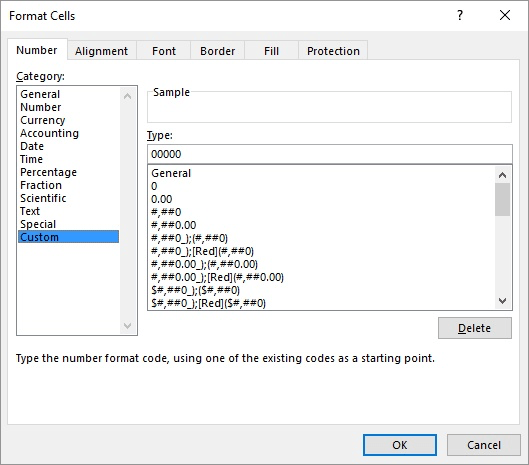Please Note: This article is written for users of the following Microsoft Excel versions: 2007, 2010, 2013, 2016, 2019, 2021, and Excel in Microsoft 365. If you are using an earlier version (Excel 2003 or earlier), this tip may not work for you. For a version of this tip written specifically for earlier versions of Excel, click here: Macro for Month Name.
Written by Allen Wyatt (last updated March 25, 2023)
This tip applies to Excel 2007, 2010, 2013, 2016, 2019, 2021, and Excel in Microsoft 365
Brian is looking for a macro that returns the full name of the current month, such as July, August, etc. Before getting to the macros, it should be mentioned that depending on your needs, you can get the desired information with one of several formulas. Perhaps the easiest formula is the following:
=Today()
Place the formula into a cell, and you end up with today's date. Format the cell using a custom format, and you end up with the full month name. The custom format is applied by using these steps:

Figure 1. The Number tab of the Format Cells dialog box.
Another formulaic approach is to use the following in a cell:
=Text(Today(),"mmmm")
No special formatting is required; the formula returns the text of the full month name for whatever today is. Finally, you could use an even longer formula that simply picks the month name from a list of months:
=CHOOSE(MONTH(NOW()),"January","February", "March","April","May","June","July", "August","September","October","November", "December")
Remember that this is a single formula; it goes all in one cell.
Which brings us, finally, to the macros. If you want a macro that returns the month name in the current cell, you are looking for a user-defined function:
Function GetMonth()
Application.Volatile
GetMonth = MonthName(Month(Date))
End Function
This simple two-line macro dynamically returns the month name for whatever the current date is. Just put this formula in a cell:
=GetMonth()
Remember—since you've just added a macro to your workbook, you'll be asked whenever you open your workbook if you want to enable macros. If you don't want to see this question all the time, you should use one of the formulaic approaches presented earlier.
Note:
ExcelTips is your source for cost-effective Microsoft Excel training. This tip (12447) applies to Microsoft Excel 2007, 2010, 2013, 2016, 2019, 2021, and Excel in Microsoft 365. You can find a version of this tip for the older menu interface of Excel here: Macro for Month Name.

Professional Development Guidance! Four world-class developers offer start-to-finish guidance for building powerful, robust, and secure applications with Excel. The authors show how to consistently make the right design decisions and make the most of Excel's powerful features. Check out Professional Excel Development today!
One of the most basic of programming structures is the conditional structure: If ... End If. This tip explains how this ...
Discover MoreHold down the Shift key as you open a workbook, and Excel bypasses any "startup macros" that may be in the workbook. If ...
Discover MoreWant to step through the worksheets in a workbook, displaying them like a slideshow? The macros provided in this tip can ...
Discover MoreFREE SERVICE: Get tips like this every week in ExcelTips, a free productivity newsletter. Enter your address and click "Subscribe."
There are currently no comments for this tip. (Be the first to leave your comment—just use the simple form above!)
Got a version of Excel that uses the ribbon interface (Excel 2007 or later)? This site is for you! If you use an earlier version of Excel, visit our ExcelTips site focusing on the menu interface.
FREE SERVICE: Get tips like this every week in ExcelTips, a free productivity newsletter. Enter your address and click "Subscribe."
Copyright © 2025 Sharon Parq Associates, Inc.
Comments